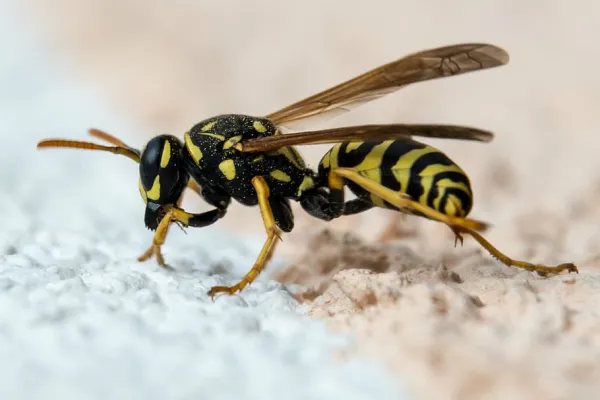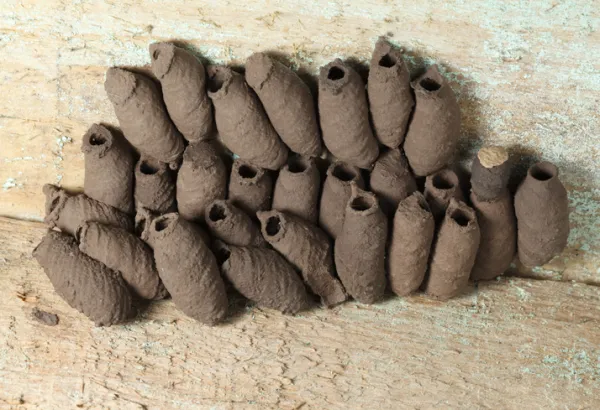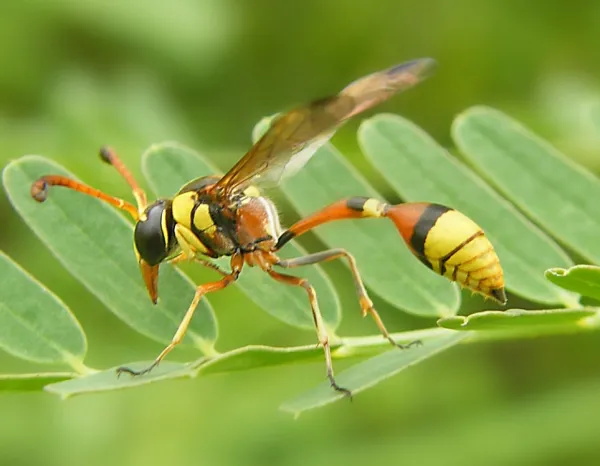Nature is full of fascinating creatures—many of which we encounter frequently in our surroundings. However, some species are less familiar, either because they’re rare or not native to our region. One such insect is the potter wasp—a solitary, mud-building wasp species that has attracted growing interest due to its unusual behavior and increasing presence in new habitats.
In this article, we will explore the potter wasp (subfamily Eumeninae) in detail: what it looks like, how it builds its nest, how dangerous its sting is, and what to do if you're stung.

Potter wasps belong to the subfamily Eumeninae, a large and cosmopolitan group of wasps with around 200 genera worldwide. These wasps are distinct from their more social relatives (like yellowjackets or hornets) because they are solitary builders—each female independently creates nests and raises her offspring.
Size: Adult potter wasps can reach up to 17 mm in length.
Coloration: Black body with bright yellow bands on the thorax and abdomen.
Behavior: Solitary and non-aggressive, unlike social wasps.
Lifespan:
Males live about 3–4 weeks.
Females live 2–3 months, spending most of their time building nests and laying eggs.
Distribution: Originally from Asia (India, Nepal, Pakistan, Kazakhstan, Tajikistan, Himalayas), but now found in many other regions due to human activity. They are not currently considered ecologically harmful in new territories.

The potter wasp’s nest is where it gets its name—it’s a tiny mud pot, carefully crafted by the female to protect her developing larvae.
Shape: Jar-like or amphora-shaped, similar to Roman pottery.
Material: Built from mud mixed with saliva, which acts as a natural cement.
Construction:
The female uses her legs to ensure the walls are of even thickness.
The nest is closed with a narrow entrance “lip” once the egg and food are inside.
Size: Around 25 mm long.
Location: Built in shaded, protected spots—under eaves, window frames, tree branches, or sheltered walls.
Other nesting methods: Some species also nest in abandoned burrows, hollow stems, or soil cavities.

The reproductive behavior of potter wasps is highly specialized and efficient.
The female lays one egg on the ceiling of the mud nest.
She then hunts spiders, paralyzing them with venom.
These immobilized spiders are placed in the nest as live food for the emerging larva.
Once filled, the nest is sealed with mud.
The larva hatches, feeds on the spiders during autumn and winter, pupates into a chrysalis, and eventually emerges as an adult wasp.
The adult breaks through the mud pot to begin its independent life.
This unique behavior not only ensures food supply but also showcases a fascinating example of insect maternal care.

Compared to other wasps, the potter wasp’s sting is relatively mild and non-lethal.
Effect on Prey: The venom paralyzes, rather than kills, spiders for larval consumption.
Effect on Humans:
Causes localized pain and swelling, similar to a typical wasp sting.
The sting is generally not severe, unless the person is allergic.
They rarely sting unless provoked or disturbed near their nest.
Because they often build nests near homes, accidental stings may occur if someone unknowingly approaches or touches the nest.
In most cases, potter wasp stings can be treated easily at home:
Apply ice or cold compress to reduce swelling and pain.
If the stinger remains in the skin, gently remove it as soon as possible to prevent infection.
Monitor for allergic reactions such as hives, shortness of breath, or swelling of the face.
If you are allergic to wasp stings, symptoms may escalate quickly. Seek immediate medical attention and consider taking:
Antihistamines
Epinephrine (if prescribed)
Emergency care to prevent anaphylaxis
The potter wasp is a remarkable insect that plays an important role in regulating spider populations and enriching biodiversity. Although its mud nests and solitary behavior may appear odd to some, these insects are non-aggressive, ecologically beneficial, and fascinating to observe.
Interested in learning more about insect behavior? You may enjoy our related article: [Differences between bees, wasps, and hornets].
animal tags: potter wasp
We created this article in conjunction with AI technology, then made sure it was fact-checked and edited by a Animals Top editor.